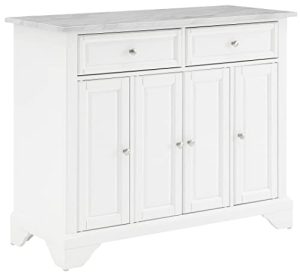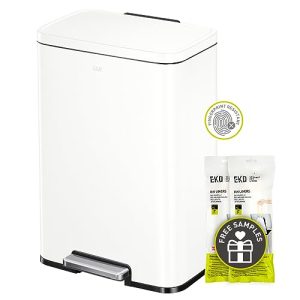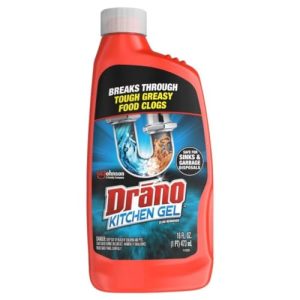Are you ready to transform your backyard into the ultimate cooking space? Installing a grill in your outdoor kitchen can turn every meal into a special occasion.
But how do you make sure it’s done right? Whether you’re a beginner or have some DIY experience, this guide will walk you through each step. By the end, you’ll know exactly how to set up your grill safely and efficiently.
Keep reading to discover simple tips that will save you time, money, and frustration—so your outdoor kitchen becomes the place everyone wants to gather.
Choosing The Right Grill
Choosing the right grill is key to a perfect outdoor kitchen. It affects cooking quality, convenience, and style. A good grill fits your space and cooking needs. It also matches your outdoor kitchen design. Focus on grill type, size, fuel, and style for the best choice.
Types Of Grills
Grills come in various types. Each offers a unique cooking experience.
- Gas grills:Quick heat and easy control. Ideal for everyday use.
- Charcoal grills:Adds smoky flavor. Requires more time and effort.
- Electric grills:Good for small spaces. Requires power source.
- Pellet grills:Uses wood pellets for flavor. Offers precise temperature control.
Size And Fuel Options
Consider the grill size based on your cooking needs. Think about how many people you will cook for.
Fuel type affects cost and convenience. Gas grills use propane or natural gas. Charcoal grills need charcoal briquettes. Pellet grills require wood pellets. Electric grills need electricity.
Choose a fuel type that suits your lifestyle and outdoor setup.
Matching Your Outdoor Kitchen Style
Grill appearance should blend with your kitchen design. Stainless steel grills fit modern styles. Cast iron or black grills suit rustic looks.
Think about color, shape, and finish. A cohesive look enhances your outdoor space.
Preparing The Installation Area
Preparing the installation area is a crucial step when adding a grill to your outdoor kitchen. It sets the foundation for a safe, functional, and enjoyable cooking space. Taking time to plan and prepare carefully can save you from costly mistakes and frustration later.
Measuring And Marking Space
Start by measuring the exact space where you want your grill to go. Use a tape measure and mark the boundaries clearly with painter’s tape or chalk. This helps you visualize the fit and ensures the grill won’t crowd your workspace or block pathways.
Consider the grill’s dimensions, including handles and doors that need to open freely. Have you checked if there’s enough room to move comfortably around your grill? Small adjustments now prevent big headaches after installation.
Ensuring Proper Ventilation
Ventilation is key to safe grill operation, especially if you’re using a gas or charcoal model. Make sure the area is open enough to allow smoke and heat to escape easily. Check for any overhead structures that might trap fumes or heat.
Think about how wind flows in your outdoor kitchen—can it blow smoke into your seating area or the house? Setting up your grill with good airflow prevents buildup of dangerous gases and keeps your cooking experience pleasant.
Checking Electrical And Gas Connections
Before installation, inspect the availability and condition of electrical outlets and gas lines. If your grill requires electricity for ignition or lights, ensure the outlet is properly grounded and placed safely away from water sources.
For gas grills, verify that the gas line complies with local codes and is free from leaks. You might want to hire a professional to inspect or install these connections to guarantee safety. Have you checked if your current setup can support your grill’s requirements?
Gathering Tools And Materials
Before you start installing your grill, gathering the right tools and materials is key. Having everything ready saves time and avoids frustrating interruptions. It also helps ensure your installation goes smoothly and safely.
Essential Tools
You’ll need a set of reliable tools to handle different tasks during the installation. A cordless drill is crucial for drilling holes and driving screws quickly. Wrenches and screwdrivers will help you secure fittings and bolts firmly.
Don’t forget a tape measure for precise measurements—accuracy matters when fitting your grill into the outdoor kitchen space. A level is also handy to make sure everything sits perfectly flat, preventing any safety issues later on.
Safety Gear
Protecting yourself should be your priority. Safety glasses shield your eyes from flying debris and sparks. Durable work gloves protect your hands from sharp edges and hot surfaces.
Depending on your environment, you might need ear protection if you’re using loud power tools. A dust mask can help if you’re cutting or sanding materials that create dust. Safety gear reduces risks so you can focus on the task confidently.
Additional Materials Needed
Besides tools, gather installation-specific materials. This includes mounting brackets, screws, and bolts compatible with your grill model. You might also need sealant or heat-resistant adhesive to secure gaps and prevent water damage.
Don’t overlook gas or electrical connectors if your grill requires them. Having these materials on hand ensures you won’t pause mid-project to hunt for missing parts.
Setting Up The Grill Base
Choose a stable, level surface to place the grill base. Ensure it fits securely within the outdoor kitchen structure for safety and ease. Proper support prevents movement during cooking.
Setting up the grill base is a crucial step in creating a functional and stylish outdoor kitchen. It’s where the magic begins, setting the stage for countless grilling sessions. A well-prepared base ensures that your grill not only looks great but also performs optimally.Building The Support Structure
Begin by selecting materials that can withstand the elements. Concrete blocks or metal frames are popular choices due to their durability. When building, ensure the support structure aligns with your grill’s size and design for a seamless fit. Consider the weight of your grill and the type of cooking you’ll do. A sturdy support structure ensures safety and longevity. Remember, this is the foundation of your outdoor cooking adventures.Ensuring Stability And Leveling
Stability is key to a successful grilling experience. Use a level to ensure the base is perfectly even, preventing any grill mishaps. A wobbly grill can lead to uneven cooking and potential accidents. Think about the terrain of your backyard. If it’s uneven, you may need to adjust the base to account for slopes. Taking the time to level the base now can save you from future headaches.Installing Heat-resistant Surfaces
Protect your support structure by adding heat-resistant surfaces. Materials like stone or tile can handle high temperatures and look stylish. These surfaces also make cleaning up spills and grease easy. Consider the aesthetics of your outdoor kitchen. Choose surfaces that complement the overall design while providing functionality. Your grill base can be both practical and a visual focal point in your outdoor space. By focusing on these elements, you ensure that your grill is ready to tackle any recipe you throw at it. What do you envision cooking first on your newly installed grill?Installing The Grill
Installing the grill is the heart of building your outdoor kitchen. It transforms a simple cooking area into a complete culinary space where you can enjoy grilling with friends and family. Getting this step right ensures safety, functionality, and long-lasting performance.
Positioning The Grill
Choose a spot that offers enough space around the grill for safe operation and easy movement. Make sure it’s near your prep area but not too close to walls or flammable materials.
Think about the wind direction and how smoke will flow. You don’t want smoke blowing directly into your seating or dining zones.
Also, consider access to utilities like gas or electricity. Positioning your grill too far from these connections can complicate installation.
Connecting Gas Or Electrical Lines
If your grill uses gas, double-check that all fittings are compatible and secure. Use a wrench to tighten connections but avoid overtightening, which can damage threads.
For electrical grills, ensure the power source is grounded properly and matches the grill’s voltage requirements. It’s safer to have a professional handle electrical wiring if you’re unsure.
Before turning on any gas or power, inspect all connections for leaks or faults. A simple soapy water test can reveal gas leaks by showing bubbles at connection points.
Securing The Grill In Place
Once positioned and connected, it’s crucial to secure the grill to prevent shifting during use. Most outdoor kitchen setups have mounting brackets or bolts designed for this purpose.
Check your grill’s manual for specific instructions on how to anchor it properly. Using the right hardware ensures stability and safety.
Have you ever seen a grill tip or move unexpectedly? Securing it firmly not only protects your investment but also keeps your cooking area safe for everyone.
Testing And Adjusting
After installing your grill in the outdoor kitchen, testing and adjusting it properly is essential to ensure safety and optimal performance. This stage helps you catch any issues before you start cooking, saving you from potential hazards and frustration. Let’s dive into how you can confidently test and fine-tune your grill for the best results.
Checking For Leaks
Before lighting your grill, check all gas connections for leaks. Mix a small amount of dish soap with water and apply it around the hose fittings and valves. If you see bubbles forming, it means gas is escaping.
Never ignore even the smallest leak—tighten the connections and test again. Have a fire extinguisher nearby just in case, and avoid using a flame to check for leaks; soap solution is safer and effective. Have you considered how often you should perform this leak test? Regular checks can prevent accidents.
Lighting The Grill Safely
Always open the grill lid before lighting it to prevent gas buildup. Follow the manufacturer’s instructions carefully, whether you are using a built-in ignition or a manual lighter. If the grill doesn’t light immediately, turn off the gas and wait a few minutes before trying again.
Lighting your grill safely protects you and your outdoor kitchen setup. How comfortable are you with using gas appliances? Practicing safe ignition habits will boost your confidence and keep your space secure.
Adjusting Heat And Controls
Once your grill is lit, test the heat settings to ensure the controls work smoothly. Start with low heat and gradually increase to high, observing how the grill responds. Adjust the knobs to find the perfect balance for your cooking style.
Pay attention to any uneven heat spots and consider repositioning burners or adjusting airflow vents if your grill has them. Have you noticed how precise heat control can change your grilling results? Fine-tuning these settings can turn a good cookout into a great one.
Maintaining Your Outdoor Grill
Maintaining your outdoor grill keeps it safe and ready for every cookout. Regular care helps prevent damage and extends its life. A clean grill also improves food taste and cooking performance.
Regular Cleaning Tips
Clean the grill grates after every use. Use a grill brush to remove stuck food. Wipe down the exterior with warm, soapy water. Empty the grease tray often to avoid flare-ups. Cover the grill when not in use to protect it from dirt and weather.
Seasonal Maintenance
At season start, check all parts for damage. Inspect burners and gas connections for leaks or cracks. Clean the inside of the grill deeply, removing grease and debris. Replace old or worn parts like ignition systems or hoses. Store the grill in a dry place during winter or use a heavy-duty cover.
Troubleshooting Common Issues
If the grill won’t light, check the gas supply first. Clean clogged burners with a small wire or pin. Uneven heat? Clean or replace burners and check for blockages. Persistent smoke may mean grease buildup. Clean all grease traps and trays thoroughly. Strange smells could come from leftover food or rust. Clean thoroughly and replace rusty parts.
Frequently Asked Questions
What Tools Are Needed To Install An Outdoor Kitchen Grill?
You need a drill, adjustable wrench, screwdrivers, measuring tape, and gas line connectors. Safety gear like gloves and goggles is essential.
How Do I Connect The Gas Line Safely To The Grill?
Turn off the main gas supply first. Use a flexible gas line and secure connections with pipe sealant. Check for leaks with soapy water.
What Surface Is Best For Installing An Outdoor Grill?
A sturdy, heat-resistant surface like stone, brick, or concrete is ideal. Avoid wood or flammable materials to prevent fire hazards.
Can I Install The Grill Myself Or Hire A Professional?
DIY installation is possible with basic skills. However, hiring a professional ensures proper gas connections and safety compliance.
Conclusion
Installing a grill in your outdoor kitchen can be simple and fun. Follow each step carefully to ensure safety and good results. Choose the right spot with enough space and ventilation. Connect the grill to power or gas properly. Test everything before cooking.
Enjoy fresh meals outdoors with friends and family. A well-installed grill adds value and joy to your home. Take your time and do it right for long-lasting use. Now, your outdoor cooking space is ready for great times.

Sophie Hartwell is the founder of KitchenQuik.com, where she shares kitchen tips, smart cooking hacks, and the best product picks to make everyday cooking easier and more enjoyable.




